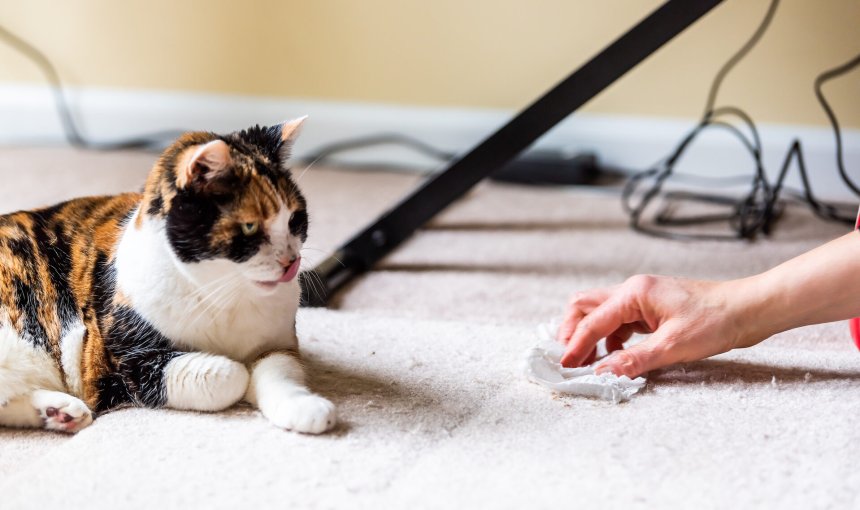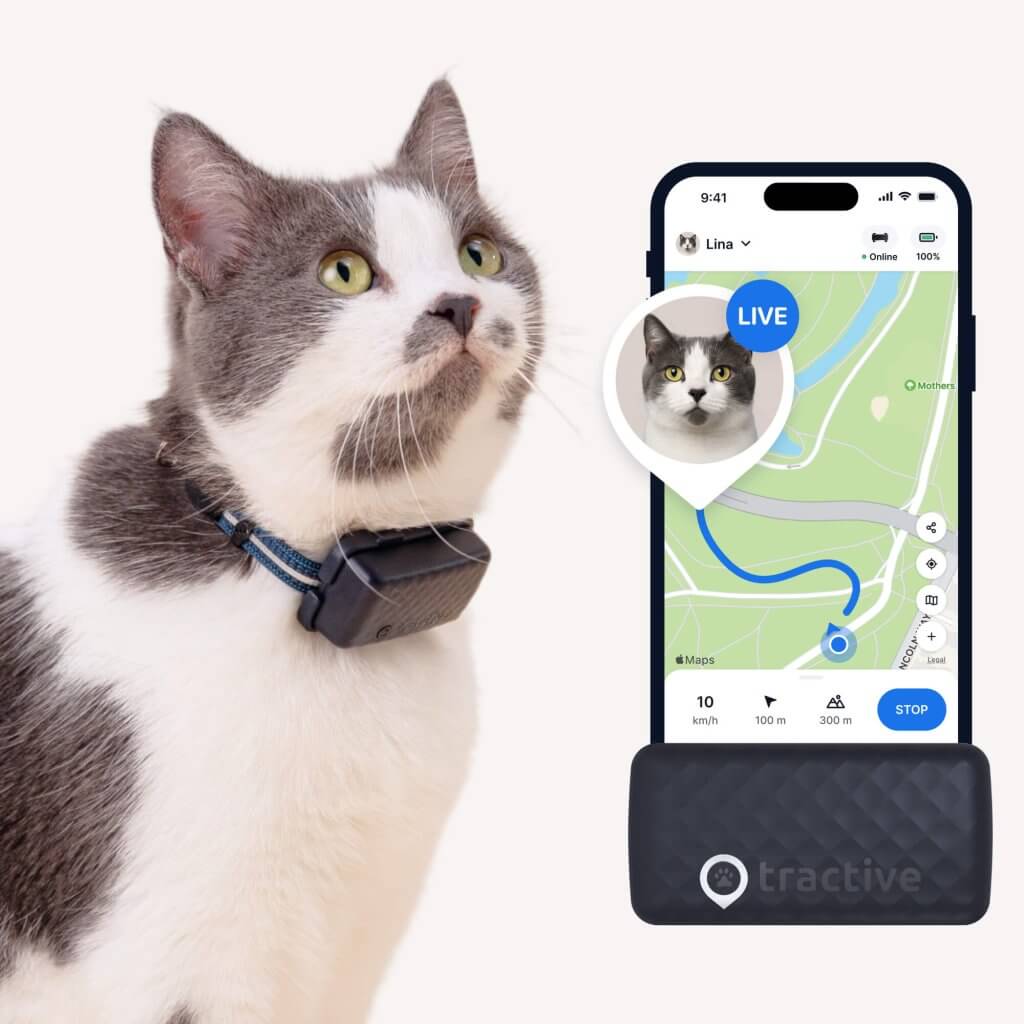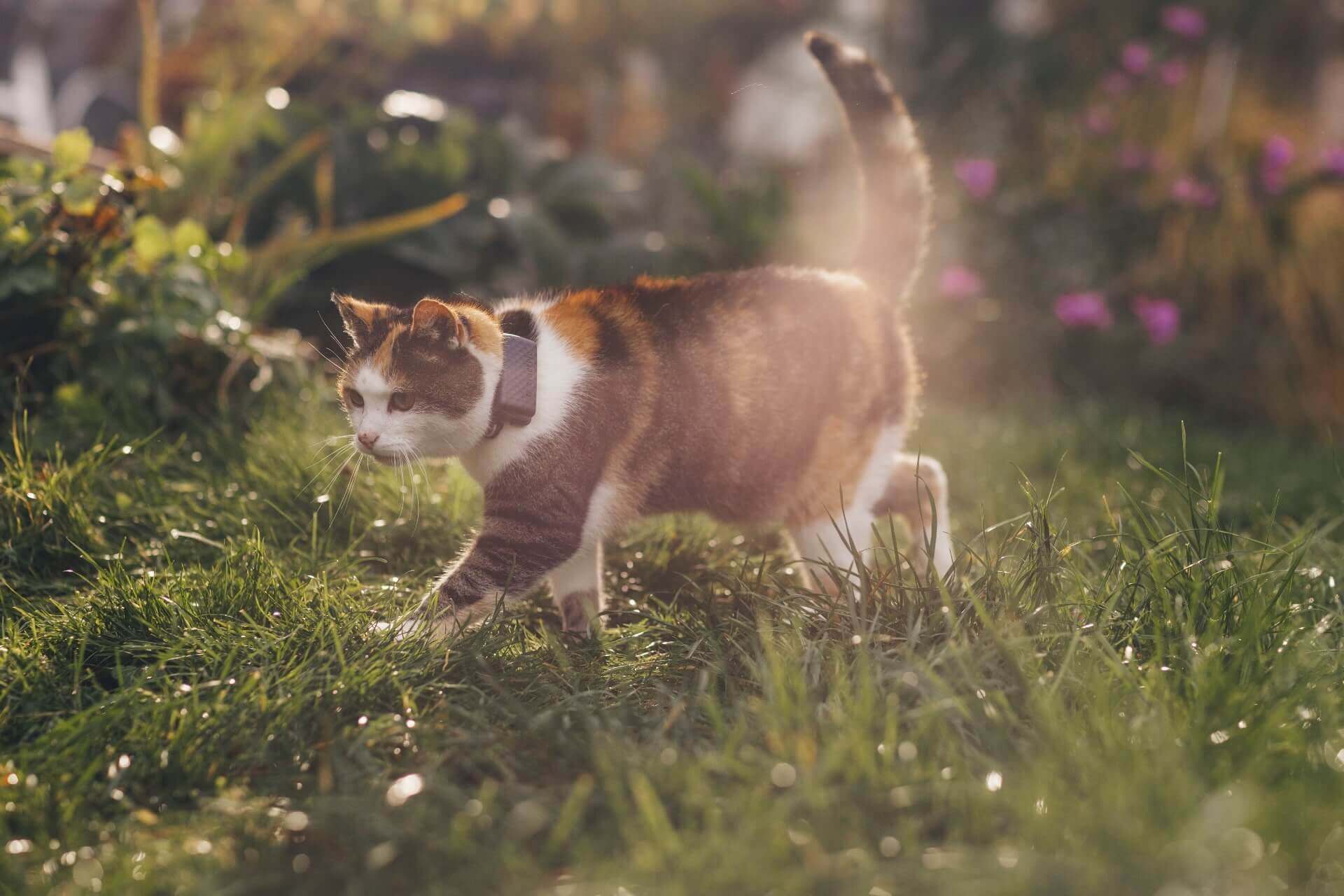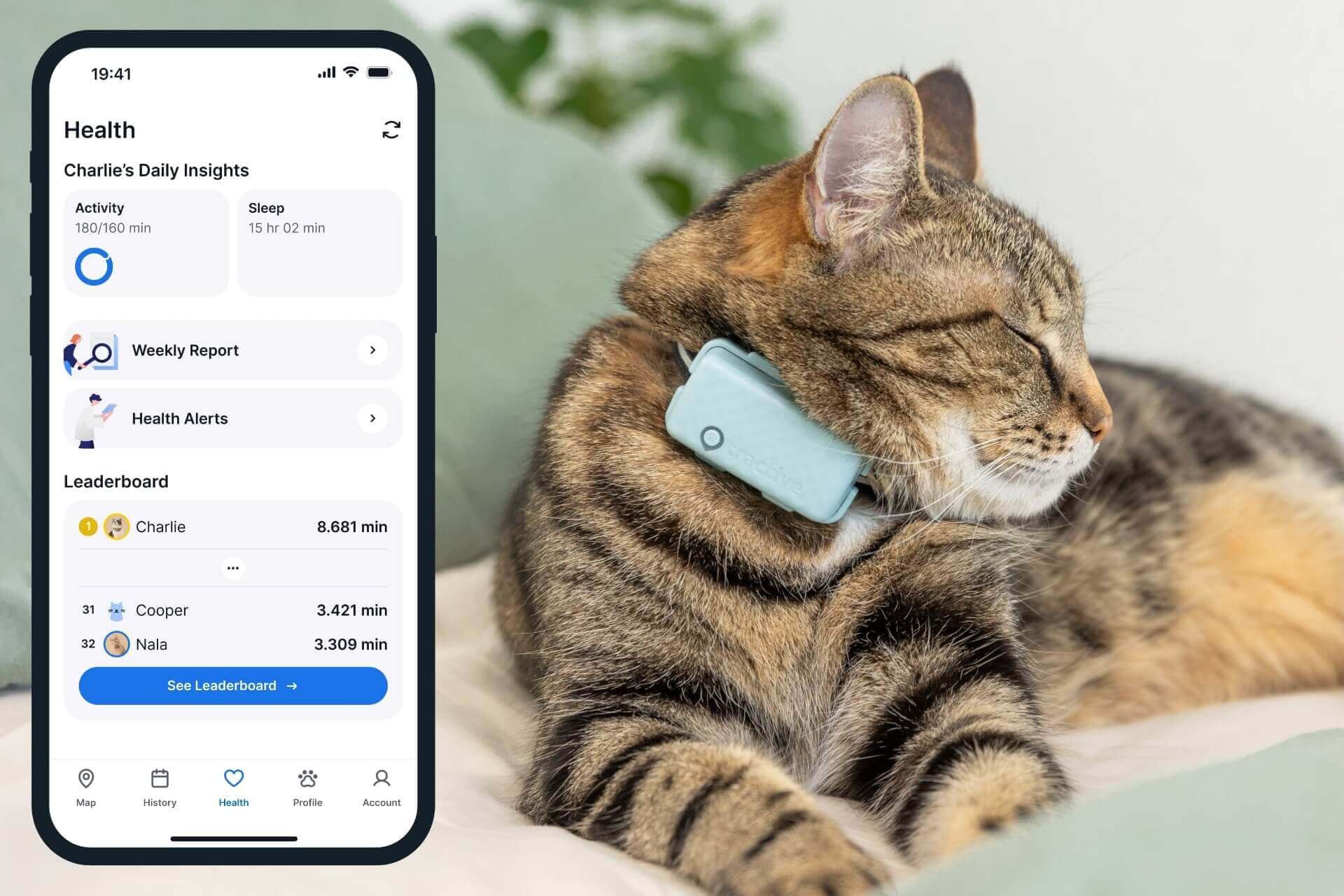 Approved by Dr. Dwight Alleyne, DVM
Approved by Dr. Dwight Alleyne, DVM Why Is My Cat Throwing Up? Here’s Why & What To Do
From hairballs to more serious conditions, the reasons your cat is now throwing up can range from harmless to hair-raising. Here's how to get to the bottom of things - and when to head to the vet.

Much like with dogs, you wouldn’t be the first cat parent to wrestle something out of your buddy’s mouth – especially if it’s something cats shouldn’t be eating. But with all the shenanigans our feline friends get up to, it’s easy to miss the signs they’re sick until they’ve left a magnificent pile of vomit on your favorite couch…and now you’re wondering, Why is my cat throwing up? Here’s why – and what you can do to help them get back to better in no time. (Including figuring out where they’re getting their paws on those “forbidden” snacks or treats – both indoors or outdoors.)
Key Takeaways
Vomiting can have many causes.
A cat throwing up can be due to harmless issues like hairballs or more serious problems, such as eating off-limits foods, infections, or stress.
Head to your vet if…
Your cat throws up 2-3 times in a row or shows other symptoms like not eating, drinking, or changes in litter box habits.
A smart cat collar can help prevent an emergency.
Your Tractive device can help you figure out where your cat has been spending time, which could help you determine if they ate something they shouldn’t have while outdoors. It also comes with Health Monitoring features like Activity Tracking and Health Alerts to help you spot potential health issues early.

Find out where your cat spends their time.
Read moreWhy is my cat throwing up so much?
Now unfortunately, your cat might be throwing up due to a whole bunch of reasons. Including:
- Eating or drinking something off-limits
Including human foods like nuts, honey, raw food, bones, foreign objects (like toys, strings, or even plants), their own fur, or drinking dirty water. - Switching to a new diet
Or, likewise, developing a sensitivity to their current diet. Cat food allergies tend to be rare but still present. - Stress & anxiety
Especially from a change in routine, like moving apartments, a change in diet or medication, traveling, or even bringing home a new pet or baby. - Infections
Including from intestinal parasites, inner ear infections, or even bacterial or viral infections. - Pregnancy
Like humans, pregnant cats can also suffer morning sickness. This could be a sign yours might be around 4 weeks into pregnancy. So they might vomit more and seem reluctant around mealtimes, but these symptoms shouldn’t last longer than a few weeks. - Eating outside of their home meals
Whether that’s from an indoor snack stash from unsupervised kitchen cabinets, fridges, or cupboards, or even from scavenging for food outdoors, or getting fed by your neighbors.
💡A smart cat collar with real-time GPS tracking can help you figure out what outdoor spots your cat’s been hanging out in the most. (Which may include spots you’d rather they don’t get their paws into and end up eating something horrendous.)

Track your cat wherever they go
Get real-time location information, wherever they go. Find out when they go somewhere they shouldn’t, with Virtual Fences. And discover their favorite spots with Territory.
Other, more serious medical conditions
Now if you’ve accounted for all the previous situations and you’re still wondering, Why is my cat throwing up?, it could be a more serious medical condition. Here are a couple that include vomiting in cats as one of their symptoms:
- Inflammatory bowel disease
- Diabetes
- Liver disease
- UTI
- Pancreatitis
- Cancer
- Hyperthyroidism
- Kidney disease
Which is why vets recommend watching out for how frequently your cat is vomiting and whether they’re showing any signs of sickness besides just throwing up.
Why is my cat throwing up undigested food?
When your cat throws up undigested food, it usually means it just wasn’t in their stomachs long enough to digest properly.1 So your vet might refer to it as “regurgitating” rather than vomiting – especially if the food that turns up hasn’t been entirely digested yet. Most often, this might turn up as yellow, orange, brown or even green vomit. Some of the most common reasons include:
- Eating too quickly – or just too much
A slow feeder can help dispense kibble or treats at more spaced out intervals, so your buddy learns not to gorge themselves too quick. - Hairballs
Which might end up mixed up with any food they eat – and come out as vomit that much quicker. Regular grooming can help prevent your cat’s fur from accumulating in their digestive tracts. - Eating grass
Which…yes, we know, sounds weird – but is actually pretty normal for cats! Depending on the grass, though, it might end up irritating their digestive tracts and trigger vomiting as a reflex. - Foreign objects, like cotton, thread, wool, or even small toys that might end up blocking their digestive tracts – and trigger vomiting as a result.
- Food allergies, especially if your cat is sensitive to specific ingredients (like protein.) This might lead to symptoms like vomiting, diarrhea, lethargy, and even skin infections.
💡 Taking a video to show your vet can help them determine whether your cat is regurgitating or vomiting out food. In the latter case, it might be a more serious situation indicating illness.
Why is my cat throwing up white foam? Or clear, foamy liquid?
If your cat is throwing up white foam, it might signal an empty stomach.2 Bring your cat to a vet right away if you notice this, as it could signal an emergency. This white foam is most likely a mixture of stomach acid and saliva – either from not eating for too long, or having eaten something they shouldn’t have.
In some cases, your cat might end up throwing up bile on an empty stomach, which might look like yellow vomit. Some of the causes might include:
- Indigestion
- Gastritis, especially if their stomach acid has increased and has inflamed their stomach lining.
- Hairballs
- Irritable bowel syndrome
- Hepatic deficiency
- Parasites
- And other, more serious conditions, like diabetes and pancreatitis
What else to watch out for in your cat’s vomit
- Blood in your cat’s vomit, especially if it’s red or pink. This might occur most commonly from your cat having swallowed a foreign object.3
- Black vomit or vomit that looks like coffee grounds. Get in touch with your vet immediately if you notice this, as it might signal a serious problem with your cat’s gastrointestinal tract.
- Mucus, which indicates your cat is regurgitating rather than vomiting.
When should I drop by my vet?
In general, you should drop by your vet for a checkup if your cat has been throwing up 2-3 times in a row.4 Keep an eye out for signs like your cat:
- Not eating or drinking for over 12 hours
- Or, on the other hand, drinking a lot of water
- Coughing, hacking, or sneezing
- Not going to the litter box as often as usual (i.e. constipated)
- Going to the litter box way more than usual (or having diarrhea)
- Relieving themselves outside of their litter box
- Vomiting up worms
If a vet has already diagnosed your cat with a previous illness – and they’ve been vomiting continuously – this might count as an emergency. Head to your clinic immediately in these cases. Also, avoid giving your cat any medicine, food, or even water by mouth if they’re vomiting. This might end up worsening the problem instead, especially if you do so without proper veterinary guidance.
What to expect once you’re at your vet’s
Here are some of the tests your vet might run to determine the cause of why your cat is throwing up:
- A physical exam, especially your cat’s mouth (and gums) or their stomachs
- A blood test
- Examining your cat’s urine or feces
- In more serious cases, an X-ray or ultrasound
Come prepared to answer questions like:
- Whether you’ve switched up your cat’s diet or introduced any new medication
- When your cat began throwing up – and how long they’ve been at it
- Any other symptoms your cat’s experiencing, including diarrhea or lethargy
- How long it’s been since your cat’s eaten or drunk anything
- What your cat’s diet is like on the regular (including what treats you feed them, if any)
- Your cat’s wandering habits, i.e., whether they’re an indoor or outdoor cat
- Anything weird you might’ve noticed in your cat’s vomit
- If you have any other pets at home – and whether they’re throwing up as well
What your vet might prescribe
Depending on the cause of your cat throwing up, your vet might recommend:
- A change in diet to bland, easily-digestible foods. Some vet-approved cat food options are specifically designed for cats with sensitive stomachs, so make sure to check with your vet before buying right away.
- Plenty of fluids to help your cat replenish the water they’ve lost through vomiting. (To avoid dehydration down the line.)
- Specific medications to help stop the vomiting. These might include anti-emetic medications, but also antibiotics, probiotics, and deworming pills.
⚠️ Avoid giving your cat any medicine built for us humans. These might contain ingredients that are toxic to cats and might do more harm than good.
Prevent your cat’s digestive distress – with these tips
Once you’re home, make sure to keep your cat on their medication schedule for as long as your vet recommends – even if the vomiting stops and they seem to be doing better. Keep an eye on their symptoms and get in touch with your vet if you notice them persisting.
Besides, it also makes sense to:
- Ensure your cat has access to enough water
Besides following any change in diet, make sure your cat is drinking enough water as they recover from their vomiting episode. Offer them plenty of cool, shaded areas to keep them safe from the sun. - Help your cat de-stress
A relaxing home environment (especially when you aren’t around) can go a long way. A stressed out cat might be less likely to eat and vomit on an empty stomach. So keep them busy with interactive toys like food puzzles or feeders, scratching posts and perches, and a cozy “box-like” spot where they can hide and observe their surroundings. - Be extra mindful what your cat eats
Meaning no extra portions or treats outside of their vet-approved diet. It’s also smart to check with your neighbors if anyone’s been feeding your cat extra, so you can avoid someone feeding your cat something toxic or allergy-inducing by accident.
Where a smart cat collar can help
When your cat is throwing up, it can be a source of stress and worry. A smart cat collar like the one from Tractive can help you get to the bottom of the issue, especially if your cat spends time outdoors.

Strapped to your cat’s collar, you can now:
Figure out where your cat’s been getting fed
Cats are natural explorers, and sometimes their curiosity can lead them to places they shouldn’t be. With a Tractive device strapped to their collar, you can:
- See where they’ve been
The Location History feature creates a “heatmap” showing where your cat spends most of their time. This can help you identify a neighbor’s yard, a shed, or even a specific patch of bushes where your cat might be getting into something they shouldn’t eat, like toxic plants, discarded food, or garbage. If your cat has suddenly started to get sick, you can check their recent Location History to see if they’ve been hanging out in a new area. This can be a major clue that something in that location is making them ill. - Follow their movements in real-time
Your tracker’s real-time GPS tracking can help you follow their movements on a map – with your cat’s location updated every couple of seconds. No need for a network of compatible devices (like with an AirTag.) - Prevent your cat from leaving a “safe zone”
Which you can set up via your Tractive mobile app. Now if your cat leaves it (or enters a “no go zone”), you’ll get an escape alert on your phone.
Besides GPS tracking, your Tractive device also helps you:
Monitor your cat’s health
Tractive’s Health Monitoring features can help you spot potential health issues early, which can be linked to vomiting. The tracker uses an accelerometer to monitor your cat’s activity and rest patterns. So you can:
- Monitor your cat’s active time and rest periods.
A sudden drop in activity can be a sign of illness, and a tracker can give you a baseline of their normal behavior, making it easier to notice when something is off. - Get your cat to a vet for a checkup early on
Tractive can send you a Health Alert if your cat’s activity or sleep patterns change significantly. For example, if your cat is suddenly moving less, it could indicate they are feeling unwell, prompting you to seek veterinary advice. These alerts can be crucial in catching a problem before it becomes severe.

And if you’ve liked this post, share it with a friend or a loved one – and let’s help build a safer, kinder world for our furry friends together.
Your furry friend’s health and wellbeing means as much as to us as it does to you. So we’ve made it a priority to only share medically-relevant content on our blog. This post was checked, double-checked, and medically verified by Georgia-based vet, Dr. Dwight Alleyne.

Dr. Dwight Alleyne, DVM
Originally from Long Island, New York, Dr. Alleyne began his career at a no-kill animal shelter before becoming a licensed veterinary technician. He graduated from Cornell University Veterinary College in 2006 and completed an internship at Purdue University. Now practicing in Georgia, Dr. Alleyne specializes in soft tissue surgery and ultrasounds. He also writes pet health articles on his website, “The Animal Doctor Blog” (www.anmldrblog.com).



